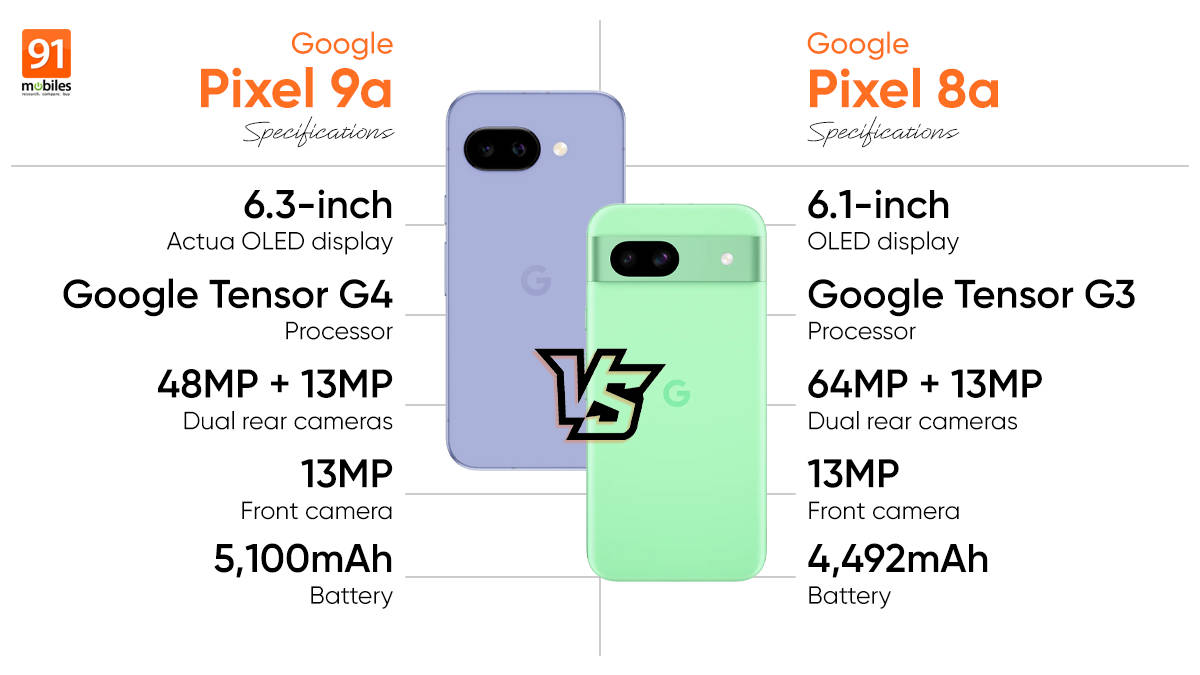
Comparing Google Pixel 9a and Pixel 8a: what are the upgrades?
- 22.03.2025 19:30
- 91mobiles.com
- Keywords: No Companies, No Impact
The Google Pixel 9a offers upgraded specs over the Pixel 8a, including a better chipset, larger battery, and improved protection. It features a brighter display but lacks some camera capabilities and storage options of its predecessor.